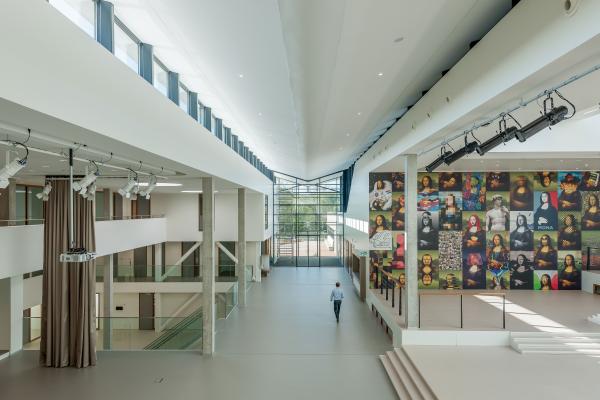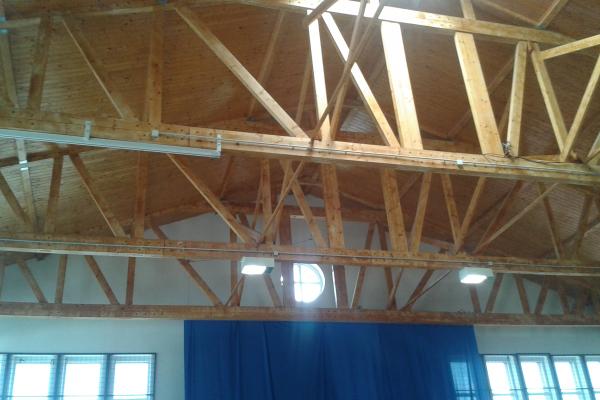As the new school year starts in this weeks, Knauf Insulation assesses the educational benefits of good acoustics and gives full marks to those schools that ensure a noise-free environment for learning.
As millions of children prepare for the start of the new school year this month and parents cross their fingers that classes will not be disrupted, spare a thought for youngsters at schools close to airports who face potential daily disruption of a different kind — noise pollution.
For example, in the UK, Heathrow flights over the summer increased from a June low of 376 to a high of 528 to between 400 and 860 in July with August and September expected to be even busier as the UK allowed double vaccinated European and North American travellers into the country without having to quarantine.
For the children at Hounslow Heath Infant and Nursery school the increasing arrivals and departures is a reminder of the past when pre-pandemic daily flights topped 1,300 with a flight every minute over the school during busy periods.
Lessons require a noise-free environment
To tackle the issue Heathrow allocated almost five million pounds through its Community Building Noise Insulation Scheme to soundproof 24 local schools impacted by its flights including installing what are known as adobe buildings — eco-friendly domes which provide a child-friendly escape from aircraft noise in playgrounds.

Maro Puljizević, Knauf Insulation’s Acoustics Project Manager at our Core Research and Development Department, says: “Children need to learn in a noise-free environment to ensure they can thrive at school.
“Excessive noise in class rooms, tutorial rooms or lecture halls can reduce the ability to hear lessons clearly and reduce understanding. This in turn can provoke annoyance and disturbance, leading to restlessness and disruption in class.”
Noise impact on reading levels
A study published in the American Journal of Epidemiology examined the reading comprehension of 2,000 students aged between nine and 10 in schools near airports in the Netherlands, Spain and the UK and found that a 20dB increase in aircraft noise was enough to delay a student’s reading level by up to eight months.
Studies examined by the World Health Organisation (WHO) have found that children exposed to continuous disruptive noise can experience poorer reading ability, memory and academic performance. In one research paper, the average classroom noise level was found to be 72dB in the UK — almost vacuum cleaner level — meaning pupils at the back of the room could not hear everything teachers said.

Lessons can be lost in translation
“Without proper sound insulation, music lessons next to a language class can ruin comprehension, heavy rain on a flat roof can make a tutorial reverberate like a drum and school hall gym classes or assemblies can be lost in translation,” says Maro.
“Many schools may also be using combinations of online classes and video calls which will suffer from intelligibility if acoustics are substandard.”

Inevitably, excessive noise also has an impact on teaching staff who are forced to raise their voice to be heard. In a study of teachers in Denmark, researchers found that average class noise was 72dB with an increase of 6.6dB for indoor sports activities.
Teachers were talking with a raised voice 61% of the time, which not only further increased noise levels, but was found to provide “evidence for an association between noise exposure and cognitive fatigue after work”.
To ensure good acoustic health and well-being for teachers and students says Maro, it is essential to focus on the three sources of noise pollution — external, internal and mechanical — and tackle each area individually.
How Knauf Insulation can help
As an example, Knauf Insulation’s Mineral Wool solutions exceed the acoustic standards of Building Bulletin 93 — recognised standards in the UK for school noise levels, reverberation times and sound insulation.
These standards also set minimum noise levels for new build schools and schools under renovation and cover every educational aspect from primary school rooms, music areas and lecture halls to libraries, pools and dining areas.

Heraklith® Wood Wool
Our Heraklith Wood Wool systems offer an ideal acoustic solution for applications such as garages and ceilings. For example, at Da Vinci College, pictured left, in the Netherlands, Heraklith A2 Wood Wool Panels were installed in the campus practice rooms to minimise noise from adjoining classes. Architects are particularly fond of Heraklith® because it offers a wide range of aesthetically appealing solutions.
*Picture in the header represents Heraklith solution in Radotin primary school canteen, Prague, the Czech Republic.
Customised combinations
We offer combinations of solutions for maximum performance. For example, by combining our Mineral Wool and Wood Wool materials in a variety of thicknesses, exceptional acoustic performance can be achieved in areas such as gyms or school halls. At the British International School of Budapest, for instance, students were unable to hear their teachers in school’s 535-square-metre gym. As a result the space was completely renovated using our Tektalan and Heraklith boards, which improved the gym from ‘bad’ to ‘good’ in the Room Acoustics Speech Transmission Index as well as providing an impact-resistant and aesthetically pleasing appearance.
